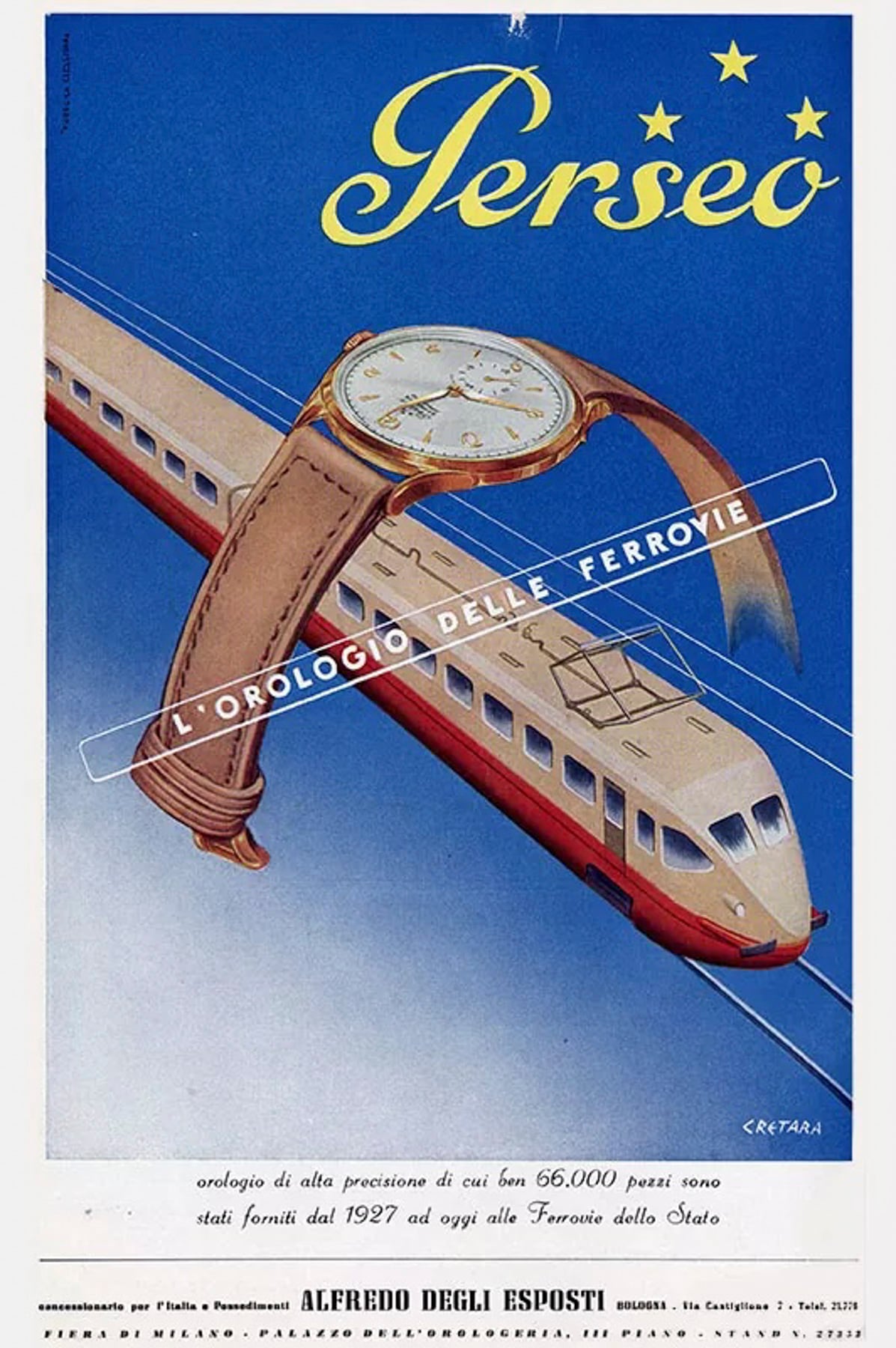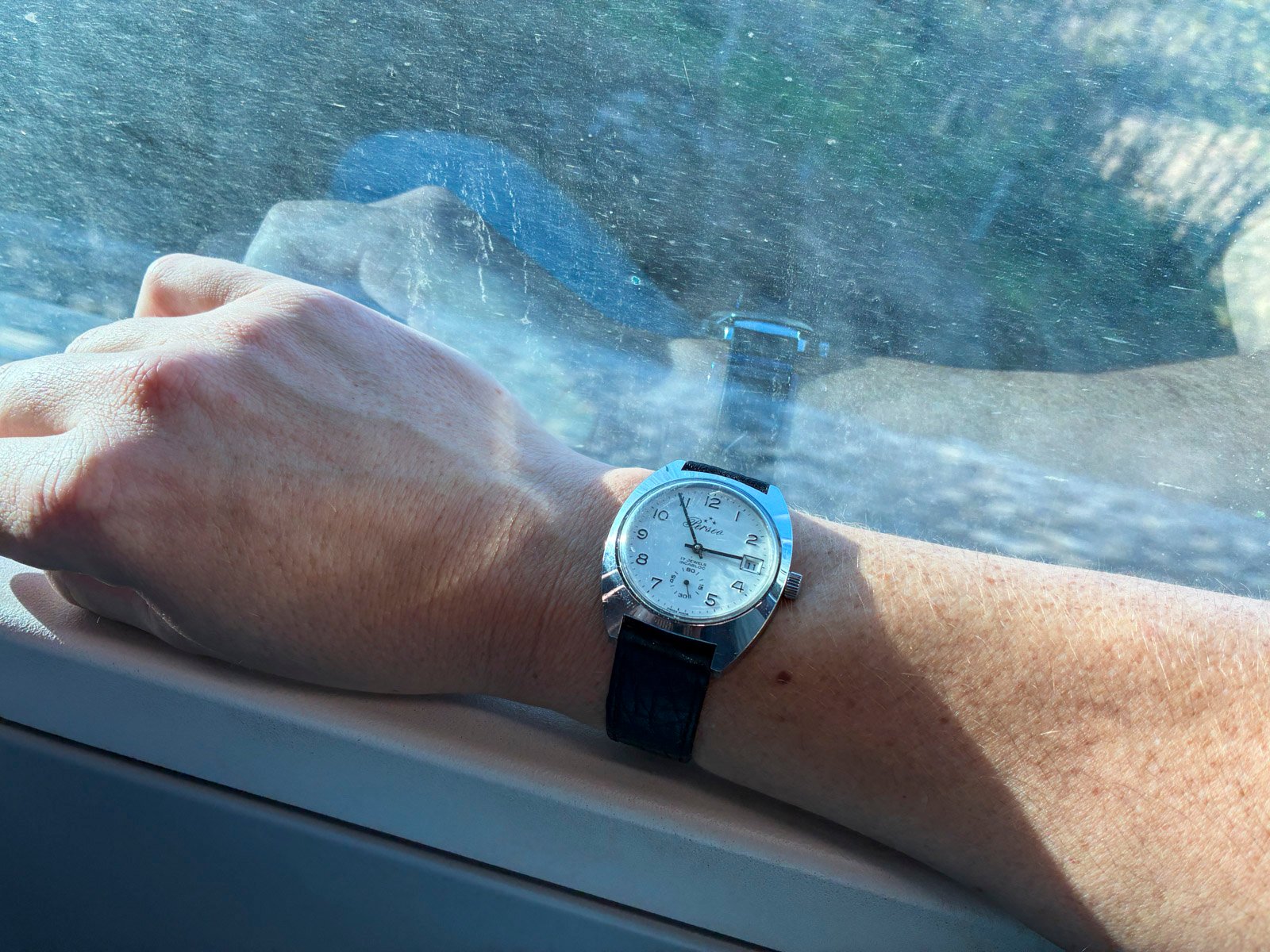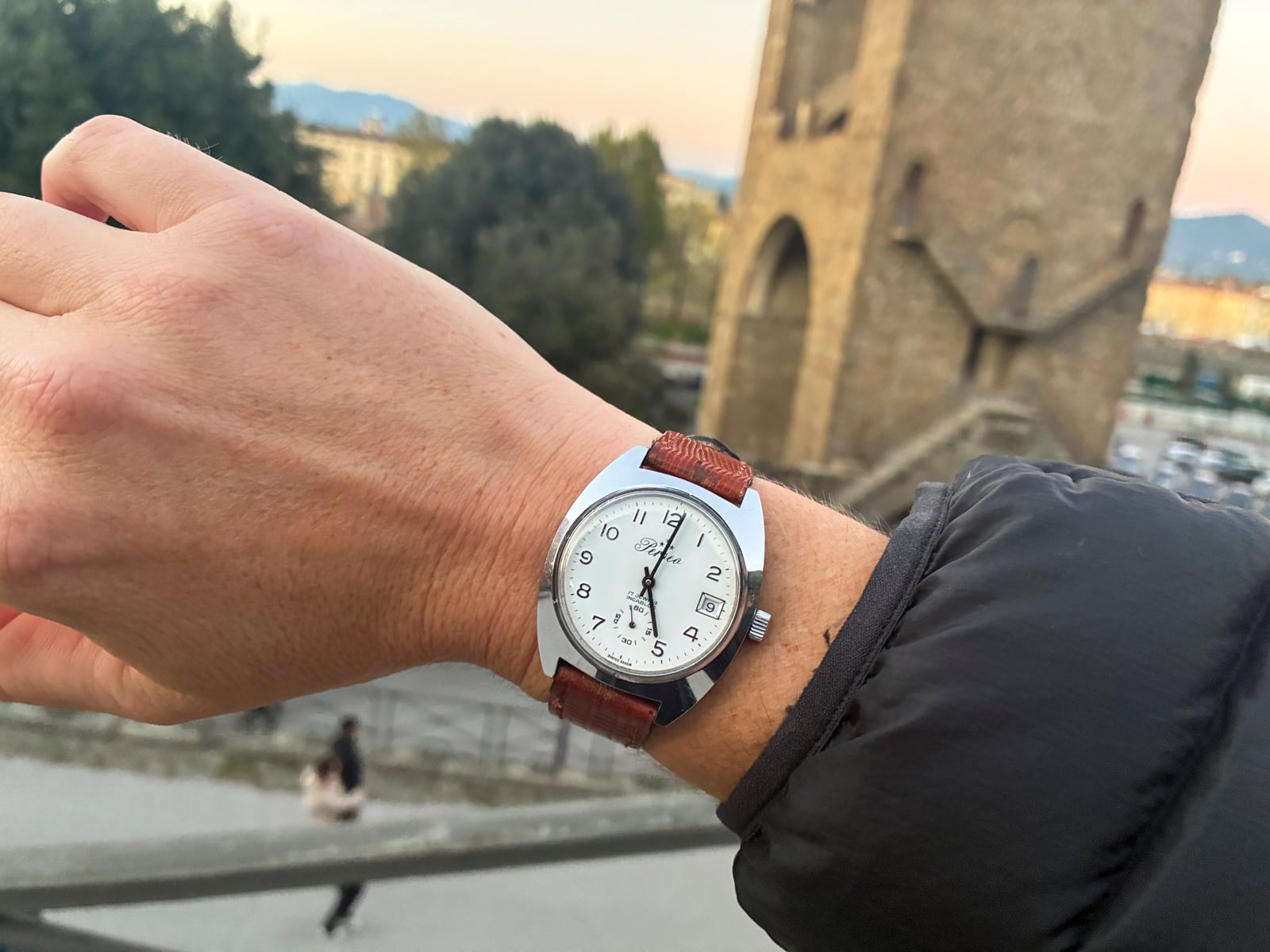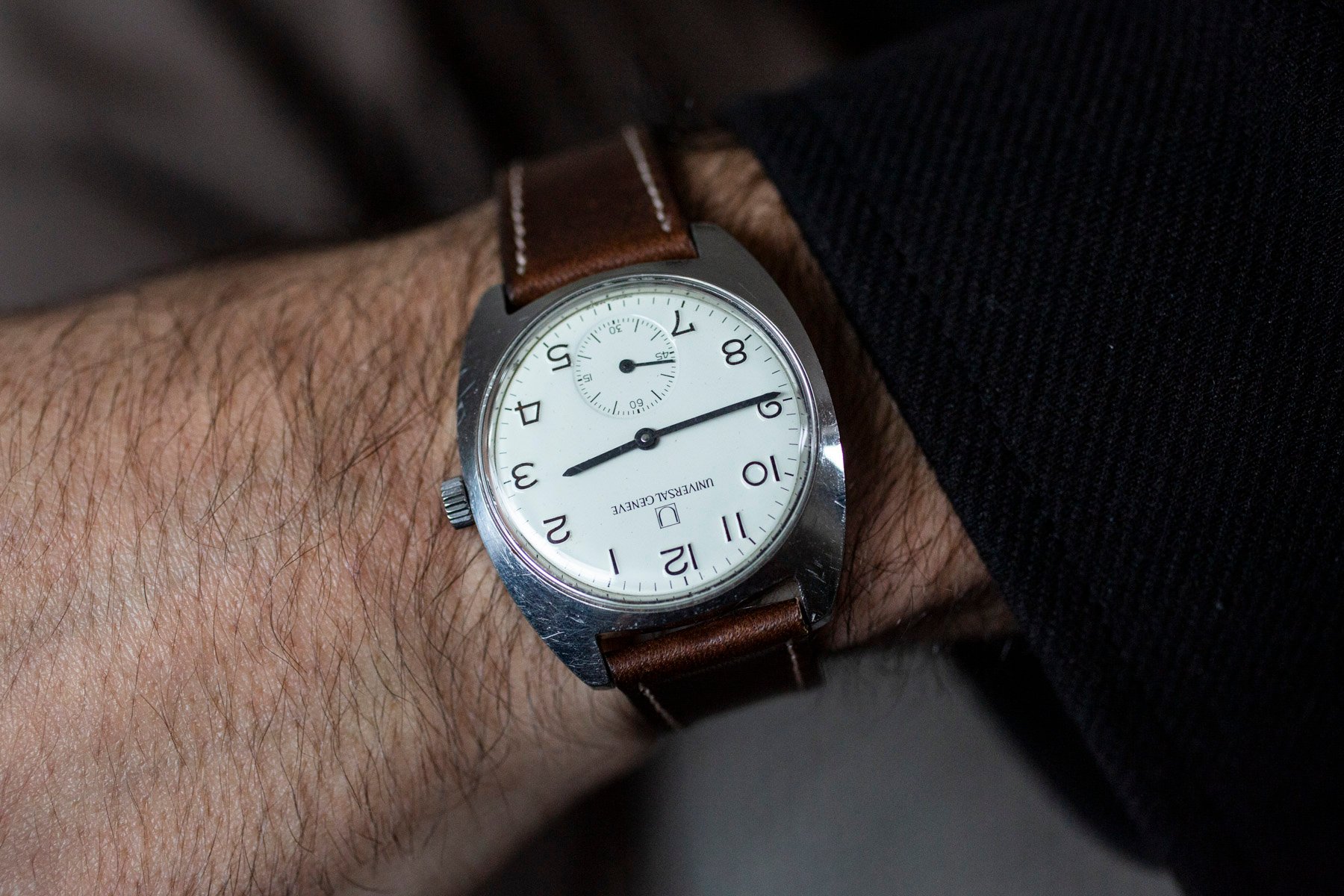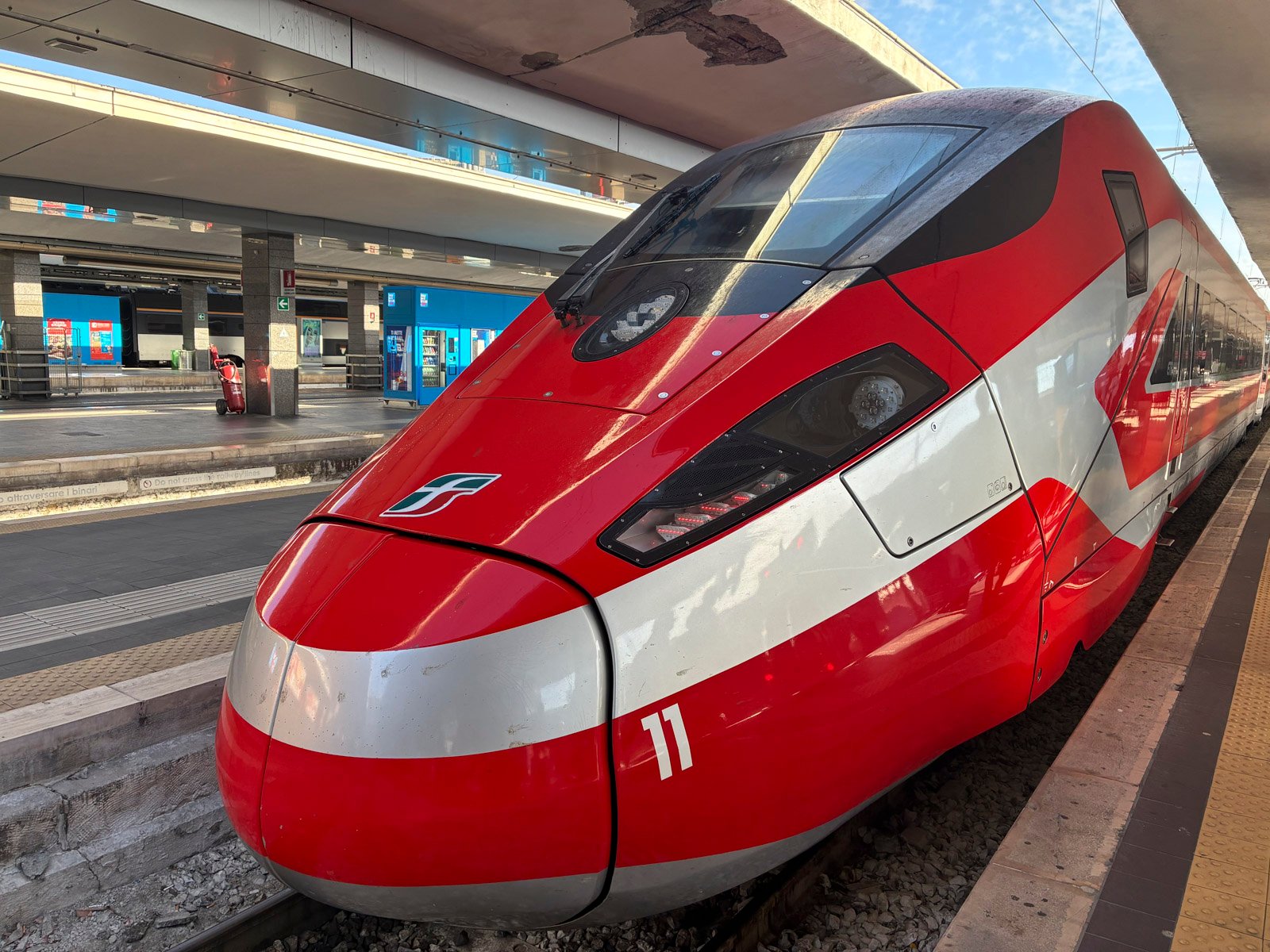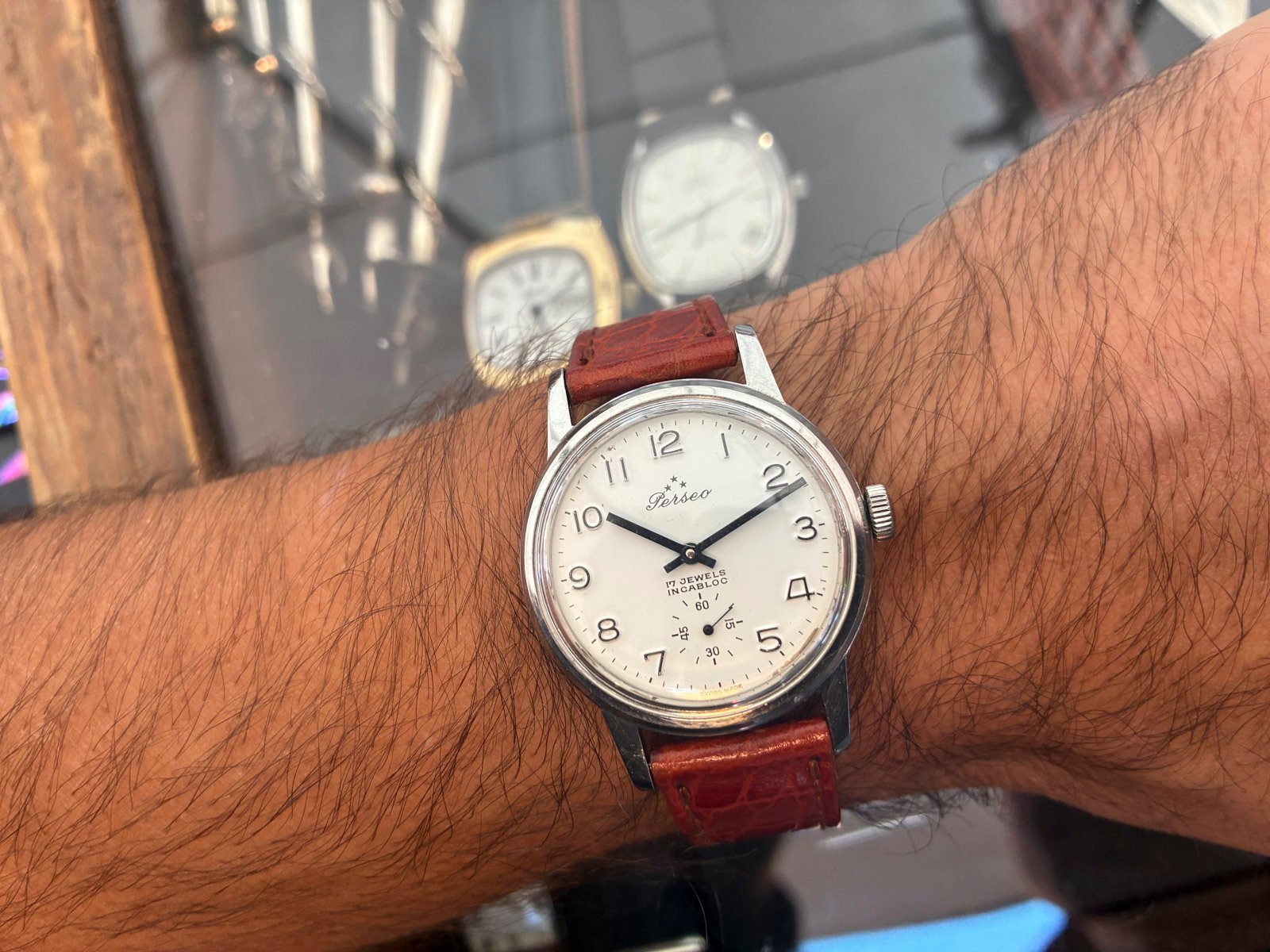Finding A Vintage Perseo Italian Railway Watch In A Flea Market
A few weeks ago, on a cool autumn morning in Bologna, I found myself wandering through a vintage market tucked between porticoed streets and the kind of cafés where the espresso machine never sleeps. Among boxes of old coins, war-era postcards, and lovingly worn leather jackets, a couple of small steel items caught my eye — two watches lying side by side in a burgundy box embossed with a golden script — “Perseo.”
This wasn’t my first encounter with Italian watches made for the Ferrovie dello Stato, or “FS” for short. I’ve written before about my Universal Genève FS, a watch issued to Italian State Railway personnel and a piece I cherish for its blend of industrial purpose and quiet elegance. That first experience opened a small door into a surprisingly rich world where timekeeping was not decorative but, rather, an essential part of national infrastructure.
Ferrovie dello Stato, or FS, watches
So when I saw not one but two Perseo FS wristwatches at this market, my pulse quickened. Both were authentic, although neither, from what I could tell, had been issued. They had the FS logo on their case backs, but neither had an issuance number. Both embodied that unmistakable railway aesthetic, but one stood out. The example I chose had a C-shaped steel case that gave it just enough presence to separate itself from the everyday.
The dial was a clean white, bearing crisp black Arabic numerals and the Perseo signature dancing under a trio of stars. The sub-seconds register at 6 o’clock added a bit of vintage formality, while the framed date window at 3 nodded toward the 1970s, a time when functionality ruled design. This wasn’t just any Italian wristwatch. This was a Perseo FS — a timepiece built for the rails.
Perseo and the Italian Railway
Perseo is a brand with roots stretching back nearly a century, but its identity is inexorably tied to the tracks that criss-cross Italy. In the late 1920s, Perseo became the official supplier of watches to the Italian State Railway. The pocket watches the brand produced in those early decades became trusted companions for conductors and station masters alike — instruments of punctuality in a world where trains were the heartbeat of national movement.
As the wristwatch overtook the pocket watch in everyday life, the FS relationship continued. Utility was still king. This meant high-contrast dials for fast legibility, sturdy Swiss movements, and reliability even after a knock. These watches were issued equipment, much like a uniform or a ticket punch. They weren’t status symbols. And yet, decades later, railway timekeeping has a romance to it. That blend of industrial reliability and quiet nostalgia is what gives vintage Perseo FS watches their enduring appeal to collectors.
The design that works hard so it doesn’t need to be fancy
The example I found in Bologna appears to be from the 1970s, and you can feel the shift in design language from railway instrument to everyday wrist companion. The case has a roughly 36mm diameter (it wears a touch larger thanks to the C-shape) and broad lugs that soften the transition into the strap.
The dial looks almost like enamel due to its crispness and sheen, a testament to Perseo’s consistency with railway clarity. Arabic numerals stand tall and clearly printed. The “17 Jewels Incabloc” text reminds us that this was a tool — shock protection included — meant to survive the rigors of service life. On the back, the case is engraved with a bold FS logo, calmly asserting its state-issued roots. “Swiss Made” confirms the expected sourcing of the movement, a manual-winding Unitas caliber that could be repaired anywhere a watchmaker with a loupe and steady hands might be stationed. Nothing about this watch is excessive, but every detail is enough.
Legibility is king
We often overlook legibility as a true luxury, but the Perseo FS makes a strong argument for it. The hands are stark black, sword-like without being aggressive. Against the white dial, they are readable even in low light, which any conductor running night lines would have appreciated.
The sub-seconds register is a satisfying visual anchor. It’s slightly recessed and numbered in five-second increments, offering the quiet thrill of precision for anyone who enjoys the ritual of watching a mechanical heartbeat sweep along. Even the date window plays its part with a clear border — not decorative but certainly efficient.
What makes a real FS watch?
As railway nostalgia has grown, the market has been flooded with watches inspired by the FS tradition. True issued pieces carry identifying elements — a case back engraved with the FS logo, a sturdy mechanical movement (not quartz in the vintage era), a crisp, work-focused dial layout, and no unnecessary decoration.
The watch I discovered checks the important boxes. It feels like a piece that was worn, used, and needed — not merely sold. Unlike many Perseo pocket watches that lived tucked into waistcoats or protective jackets, wristwatches saw the world in motion. They handled weather, gloves, knocks on train doors, and hurried glances between station announcements. The gentle scratches on this one tell a life story rather than flaws.
The thrill of the find
Collectors know that the search is often half the joy. Finding a vintage piece in its original box — velvet-lined burgundy with “Perseo” printed in gold — was the final persuasive argument. Of course, we always hope to find a vintage watch with its original box. In reality, though, most boxes were lost to drawers, moves, and decades of spring cleaning.
The strap on mine likely isn’t original. It’s a textured brown leather that speaks more to the market vendor than the railway system. However, it complements the warm utility of the watch. Replacing it with a period-correct black leather or even a rugged canvas strap would bring it closer to its workwear roots. But for now? It stays because it’s part of the story of this watch as found.
Why the Perseo FS deserves more attention
The history of Italian watches doesn’t always get the platform it deserves. Switzerland often steals the spotlight, and German industrial efficiency stakes its claim. But Italy has shaped watch culture in subtle yet influential ways — not through grand complications but through design with soul.
The Perseo FS is a perfect case study of a function-driven design with character, cultural significance without pretension, and mechanical reliability without a luxury markup. It’s the kind of watch that rewards curiosity. And isn’t that what collecting should be about? My Universal Genève FS may have sparked the fascination, but this Perseo FS cements it. The world of Italian railway watches is deeper than it first appears, and each model has its chapter of history to tell.
Concluding thoughts — From Bologna with love
As I left the market, the Perseo ticking calmly on my wrist, I thought about time in terms of railways. Trains run on schedules — the future arriving exactly when expected. Watches like this kept that promise alive. They ensured travelers, workers, and the nation stayed on track. In the town of Arezzo, I visited a local watchmaker who quickly regulated the watch. It had been running about four minutes fast per day. It has settled down now, but I’ll be having the watch serviced when I get back to Australia.
Sometimes, the perfect vintage piece isn’t found in an auction listing or a polished boutique. Sometimes, it’s sitting in a box in Bologna, waiting for the right wrist and the next chapter in its journey.



